Erik in NJ
Silver Member
- Oct 4, 2010
- 4,037
- 3,043
- 🥇 Banner finds
- 1
- Detector(s) used
- Minelab Explorer SE Pro & CTX-3030
- Primary Interest:
- Metal Detecting
I'm not quite sure what the base metal is on these decorative pieces. They are quite heavy and through a loupe I see white flakey stuff essentially growing on them as they oxide. One smaller item (not pictured) is sitting in hot peroxide, but this metal doesn't cause much fizzing and I'm not sure how to clean them further as they appear to be somewhat brittle. My best guess is late 1700's to mid-1800's timeframe which is considerably older than what I was finding on this property. The one item is obviously a concave handle of some sort that attached to a circular item (notice the pronounced lip). But a handle to what? The other piece is very decorative, but I don't see any attachment points. All of the items show signs of gilt remaining here and there, but I'm not sure if they all stem from the same item. The base metal in all seems to be identical (pewter?). Any tips on further cleaning? Any ideas on what they were from?
Other items found on the property include two silver plated spoons (different makers). A piece of a copper garter clip. A silver or nickle plated buckle. Some parts to a small clock with a little crescent shaped pendulum. A few spent brass shotgun shells. I'm not sure when garter clips were in vogue, but the other items seem to be younger than these enigmatic fragments.
Other items found on the property include two silver plated spoons (different makers). A piece of a copper garter clip. A silver or nickle plated buckle. Some parts to a small clock with a little crescent shaped pendulum. A few spent brass shotgun shells. I'm not sure when garter clips were in vogue, but the other items seem to be younger than these enigmatic fragments.


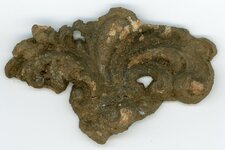
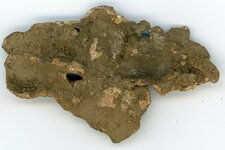
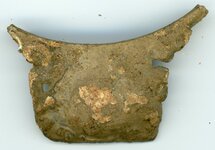
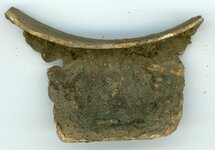
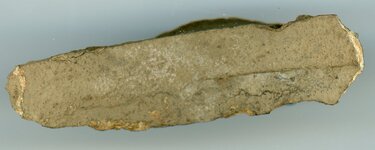
![IMG_1445[1][1].JPG](/data/attachments/500/500593-462b23a59af1f3eabc4d5b240784fc9b.jpg)


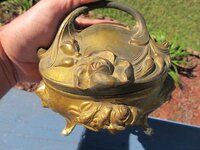
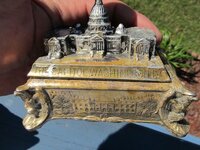
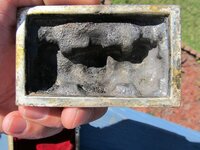
![006[1][1].JPG](/data/attachments/645/645836-8296bf8f24b68e6976d908a3236391a8.jpg)
![007[1][1].JPG](/data/attachments/645/645844-ca9df789fd6849fb7857fd490d208bb5.jpg)


